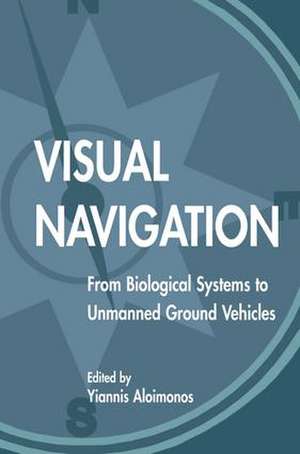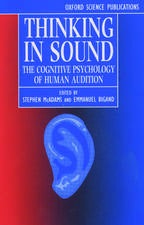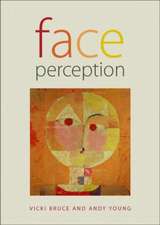Visual Navigation: From Biological Systems To Unmanned Ground Vehicles: Computer Vision Series
Editat de Yiannis Aloimonosen Limba Engleză Paperback – 7 mai 2015
In this book, the barriers between different disciplines have been smoothed and the workings of vision systems of biological organisms are made clear in computational terms to computer scientists and engineers. At the same time, fundamental principles arising from computational considerations are made clear both to empirical scientists and engineers. Empiricists can generate a number of hypotheses that they could then study through various experiments. Engineers can gain insight for designing robotic systems that perceive aspects of their environment.
For the first time, readers will find:
* the insect vision system presented in a way that can be understood by computational scientists working in computer vision and engineering;
* three complete, working robotic navigation systems presented with all the issues related to their design analyzed in detail;
* the beginning of a computational theory of direct perception, as advocated by Gibson, presented in detail with applications for a variety of problems; and
* the idea that vision systems could compute space representations different from perfect metric descriptions -- and be used in robotic tasks -- advanced for both artificial and biological systems.
Preț: 356.29 lei
Nou
Puncte Express: 534
Preț estimativ în valută:
68.20€ • 74.10$ • 57.32£
68.20€ • 74.10$ • 57.32£
Carte tipărită la comandă
Livrare economică 22 aprilie-06 mai
Preluare comenzi: 021 569.72.76
Specificații
ISBN-13: 9781138876545
ISBN-10: 1138876542
Pagini: 430
Dimensiuni: 152 x 229 x 20 mm
Greutate: 0.61 kg
Ediția:1
Editura: Taylor & Francis
Colecția Psychology Press
Seria Computer Vision Series
Locul publicării:Oxford, United Kingdom
ISBN-10: 1138876542
Pagini: 430
Dimensiuni: 152 x 229 x 20 mm
Greutate: 0.61 kg
Ediția:1
Editura: Taylor & Francis
Colecția Psychology Press
Seria Computer Vision Series
Locul publicării:Oxford, United Kingdom
Public țintă
ProfessionalCuprins
Contents: Contributors. Y. Aloimonos, Visual Navigation: Flies, Bees and UGV's. T. Hamada, Vision, Action and Navigation in Animals. A. Horridge, Pattern and 3D Vision of Insects. K. Daniilidis, M.E. Spetsakis, Understanding Noise Sensitivity in Structure from Motion. L. Robert, C. Zeller, O. Faugeras, M. Hébert, Applications of Non-Metric Vision to Some Visually Guided Robotics Tasks. C. Fermüller, Y. Aloimonos, Direct Motion Perception. J.J. Weng, S. Chen, T.S. Huang, Visual Navigation Using Fast Content-Based Retrieval. R.C. Nelson, From Visual Homing to Object Recognition. T. Dean, J-L. Marion, Planning and Navigation in Stochastic Environments. M. Herman, M. Nashman, T-H. Hong, H. Schneiderman, D. Coombs, G-S. Young, D. Raviv, A.J. Wavering, Minimalist Vision for Navigation. E.M. Riseman, A.R. Hanson, J.R. Beveridge, R.T. Kumar, H. Sawhney, Landmark-Based Navigation and the Acquisition of Environmental Models. E.D. Dickmanns, Improvements in Visual Autonomous Road Vehicle Guidance 1987-94.
Recenzii
"The wide range of topics discussed in this superbly written book allow it to be both informative and interesting. It is suitable for students, academics, researchers, and those in industry who are involved with, or interested in, visual navigation systems."
—Industrial Robot: An International Journal
—Industrial Robot: An International Journal

















